





Traktory značky Zetor začaly psát svou historii v poválečné době. První traktor Zetor Z 25 má v křestním listu datum 15. března 1946. O pět měsíců později vydala Obchodní živnostenská komora Republiky československé ochrannou známku pro značku Zetor.
Tato značka vznikla, jako vše geniální, velice prostě a jednoduše: přepis výslovnosti písmene „Z“, které ve svém znaku používala brněnská Zbrojovka, v níž vznikly první traktory, se spojil se dvěma posledními písmeny slova traktor. V roce 1954 byla založena výzkumně-vývojová základna Zetoru. V tomto období na pole vyjel po veleúspěšných Zetorech 25 a 15 i silnější Zetor 30 a v roce 1956 uzřel světlo světa i nový robustnější model Zetor 50 Super s výkonem motoru 50 koní (37 kW).

Za rok 1947 se prodává celkem téměř 3500 traktorů – necelá jedna třetina míří do Irska, Polska, Dánska nebo Belgie.
Více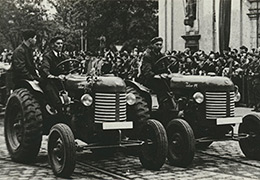
Během let 1947 – 1949 se vyrobí celkem 2215 traktorů Zetor 15. Jde o jednoválcový prototyp traktoru Zetor 25. Zetor 15 má naftový motor s výkonem 15 koní (11 kW), převodovku s šesti rychlostmi a maximální rychlost 22 km/h.
Více
František Musil se neustále snaží inovovat svůj produkt. Inspiraci hledá zejména v zahraničí. Výsledkem je nová verze traktoru – Zetor 25 K (K = kultivační).
Více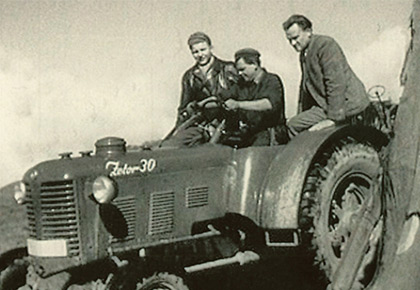
Musil má spoustu zkušeností s řešením naftových motorů. Výsledkem poptávky té doby je jeho návrh traktoru Zetor 30.
VícePo deseti letech existence značky se vedle již populárních traktorů úspěšně prosadil i pásový traktor Zetor Super P, který se poprvé představil na druhé výstavě československého strojírenství na výstavišti v Brně v roce 1956.
O několik let později přišel Zetor jako první na světě s progresivní a jedinečnou koncepcí využití unifikovaných prvků při výrobě traktorů, tzn. s možností využít shodné díly na různé modely a značně tak zjednodušit výrobu a servis. V roce 1960 byl na trh uveden Zetor 3011 - základní model revoluční unifikované řady - UŘ I. Následovaly další modely této řady - Zetor 2011 a 4011, u nichž bylo s ohledem na různé modifikace zavedeno také nové číselné označení jednotlivých modelů.

V roce 1960 je traktor Super 35 modernizován a označení tohoto modelu se mění na Super 50. Tyto traktory putují až do daleké Barmy, Ghany nebo Iráku. Do roku 1968 se jich vyrobí více než 150 000 kusů.
Více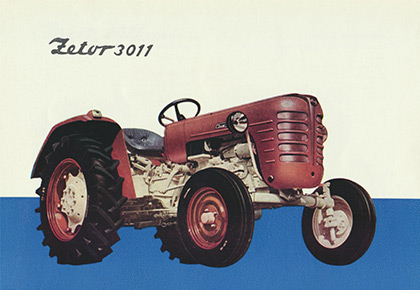
Ve druhé polovině padesátých let přichází Zetor jako první na světě s progresivní a jedinečnou koncepcí využití unifikovaných prvků při výrobě traktorů.
Více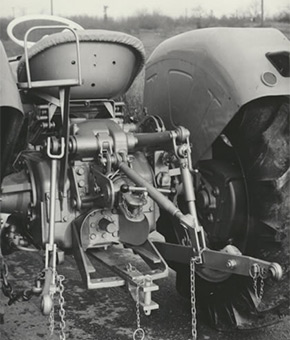
Spolu s prvními modely UŘ I spatřuje v roce 1960 světlo světa i Zetormatic – hydraulický zvedací systém s automatickou kontrolou hloubky, který umožňuje přenést část váhy taženého nářadí na zadní nápravu traktoru a tím zlepšit trakční vlastnosti.
Více
Zetor reaguje na požadavky zákazníků po vyšších výkonech traktorů. Na podporu vývoje silnějšího traktoru vzniká v roce 1962 „Československo-polské výzkumné středisko traktorů“ se sídlem v brněnském Zetoru.
Více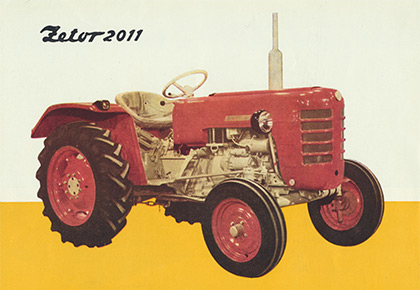
V roce 1962 následuje další model této řady - Zetor 4011, v roce1963 pak model 2011. Je to počátek oblíbeného sortimentu traktorů, který zákazníkům nabízí možnost výběru technické vybavenosti dle požadavků.
Více
Na základě hospodářské politiky tehdejšího politického uskupení začíná Československo spolupracovat při výrobě traktorů s Polskem.
Více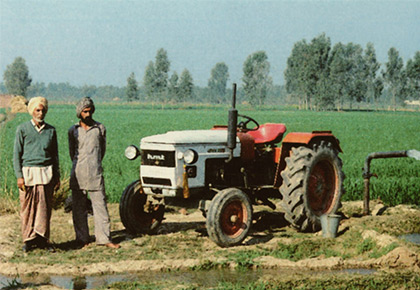
Jak expandovat do zámoří bez rizika vysokých nákladů na transport? Jako řešení se nabízí místní montáž na základě licenčních smluv s místními výrobci.
VícePo deseti letech existence značky se vedle již populárních traktorů úspěšně prosadil i pásový traktor Zetor Super P, který se poprvé představil na druhé výstavě československého strojírenství na výstavišti v Brně v roce 1956.
O několik let později přišel Zetor jako první na světě s progresivní a jedinečnou koncepcí využití unifikovaných prvků při výrobě traktorů, tzn. s možností využít shodné díly na různé modely a značně tak zjednodušit výrobu a servis. V roce 1960 byl na trh uveden Zetor 3011 - základní model revoluční unifikované řady - UŘ I. Následovaly další modely této řady - Zetor 2011 a 4011, u nichž bylo s ohledem na různé modifikace zavedeno také nové číselné označení jednotlivých modelů.

Poptávka po vyšších výkonech přináší první model UŘ II. Do sériové výroby je zaveden v roce 1968. Řada nových prvků a řešení, která v této době nejsou vůbec běžná, tehdy staví Zetor na přední místo mezi světovými výrobci traktorů.
Více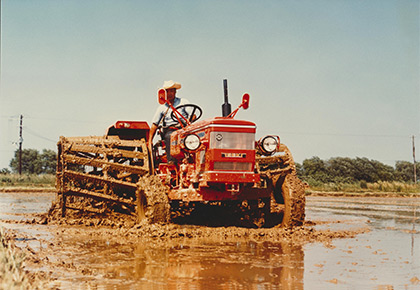
Traktory Zetor jsou v letech 1968 – 1974 dodávány i do japonské společnosti Iseki. Vybaveny jsou klecovými koly a speciálním brzdovým systémem pro práci v mokru na rýžových polích. Během sedmi let je sem dodáno zhruba 4 000 traktorů.
Více1. listopadu 1976 se už světoznámá značka Zetor stala zároveň i názvem firmy. V Zetoru pokračoval vývoj traktorů UŘ II. V roce 1975 byl na trh uveden první šestiválcový model 12011.
Koncem sedmdesátých let začalo postupné převádění výroby do slovenského podniku Závody ťažkého strojárstva (ZTS) Martin, kde byly inovované typy těchto traktorů vyráběny pod označením ZTS a dočkaly se ještě tří modernizací. I série UŘ I se modernizovaly a vylepšovaly. Po převedení výroby řady UŘ II Crystal na Slovensko se stala UŘ I znovu nejdůležitějším výrobním sortimentem společnosti Zetor. Traktory měly robustní a přesto pohodlnou bezpečnostní kabinu, větší výkon při nižší spotřebě paliva a vylepšené převodovky s větším rozsahem rychlostí.

V roce 1980 je již k dispozici další modernizace UŘ I – řada „10“. Traktory nabízejí větší výkon při nižší spotřebě paliva a vylepšené převodovky s větším rozsahem rychlostí.
Více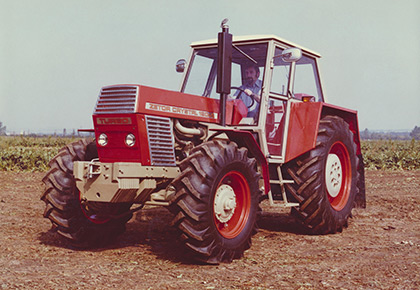
V roce 1980 je na trh v rámci UŘ II uveden model 16045 turbo s pohonem na všechna čtyři kola s výkonem 160 koní (118 kW).
VíceV této etapě zahájil Zetor výrobu traktorů UŘ III, které svou koncepcí a technickými parametry odpovídaly zvýšeným nárokům zejména na výkon. V roce 1992, krátce po zahájení výroby traktorů této unifikované řady, se na trhu objevily také inovované traktory UŘ I pod obchodním názvem Major.
V roce 1997 přineslo pět aktualizovaných modelů další výraznou konstrukční změnu řady UŘ I. Traktory s obchodním názvem Super jsou poháněny tříválcovými a čtyřválcovými motory s výkonem od 45 do 82 koní (33 – 60 kW). Vrátily se zaoblené tvary blatníků a podobně zaoblená kapota je pro lepší viditelnost nakloněná dopředu. K dalším změnám patří vylepšená hydraulika, nové moderní řešení kabiny s ergonomicky umístěnými ovládacími prvky traktoru včetně bočního řazení, vyšší rychlost (40 km/h) a rozšířený výběr příslušenství.
Zetor v této dekádě prošel mnoha změnami. 1. července 1993 došlo k privatizaci a zároveň ke změně názvu společnosti na Zetor, a.s. V roce 2000 byl přijat revitalizační program a 22. dubna 2002 schválila vláda České republiky prodej majetkové účasti státu společnosti HTC holding.
Tato společnost ihned zahájila finanční stabilizaci společnosti spolu s masivní restrukturalizací. Souběžně pokračoval vývoj a inovační proces UŘ I hlavně z hlediska plnění zpřísňujících se předpisů na ochranu životního prostředí na vyspělých trzích. Předešlé modely této řady jsou od roku 2004 nahrazeny moderními traktory UŘ I známými jako řada Proxima, které plní zpřísněné emisní limity. Vývoj se nezastavil ani u traktorů UŘ III, které byly výrazně modernizovány a v roce 1998 uvedeny na trh pod obchodním názvem Forterra.

Ukázkový příklad, kdy moderní technologie staví na tradičních tvarech traktoru z padesátých let. Konkrétně jde o pět nových modelů z roku 1997: 3321/41, 4321/41, 5321/41, 6321/41 a 7321/41 T.
Více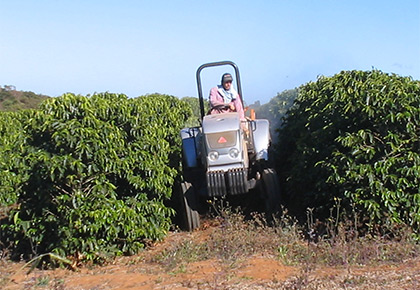
V roce 1997 uzavírá brazilská společnost Agrale se Zetorem smlouvu na výrobu traktoru s výkonem 60 – 80 koní (44 – 59 kW).
Více
Vývoj se nezastavuje ani u traktorů UŘ III, které jsou výrazně modernizovány a v roce 1998 uvedeny na trh pod obchodním názvem Forterra. Na rozdíl od dosavadních modelů UŘ III je Forterra vyráběna výhradně v provedení s pohonem čtyř kol.
Více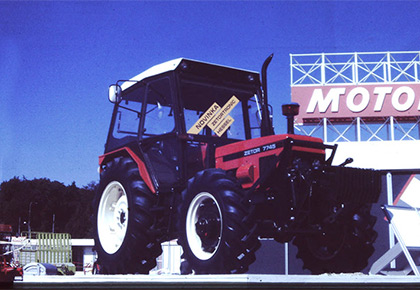
V letech 1998-1999 odkupuje skoro polovinu akcií od Konsolidační banky společnost Motokov. Bohužel ale pro nedostatek provozního kapitálu je výroba traktorů zastavena.
VíceV roce 2007 se sortiment Zetoru rozšiřuje o sérii Proxima Plus, která má ve výbavě přední a zadní nápravu určenou pro těžké zatížení. Koncem roku 2008 se začíná s výrobou řady Proxima Power, která je vybavená zajímavou novinkou - převodovkou s elektrohydraulickým reverzním řazením, která umožňuje řadit zpětné rychlosti pod zatížením.
Přírůstkem řady Forterra je v roce 2010 model 135 s novým motorem Z 1605 o výkonu 136 koní (100 kW) s šestnácti-ventilovou hlavou válců. Pro rok 2011 přichází Zetor s dalšími úpravami traktorů řady Proxima, Proxima Plus a Proxima Power. Traktory mají na první pohled nové typové označení. Hlavní modernizací je zavedení mechanické hydrauliky s regulací od táhla třetího bodu. V roce 2012 se nejnovějším představitelem produktového portfolia stává Forterra HSX – nejsilnější a nejlépe vybavený traktor. Modelová řada Forterra a později i Forterra HSX je od roku 2011 vybavena systémem HitchTronic – automatickou regulací zadního tříbodového závěsu.
Za poslední roky je značka ZETOR opět o něco bohatší. Získala nové zákazníky, vstoupila na nové trhy, překonala spoustu výzev a dokázala postupně rozšířit produktové portfolio na stávajících osm modelových řad ve výkonovém rozpětí od 20 do 170 koní.
Neustálá modernizace produktů stále vychází v maximální míře vstříc požadavkům zákazníka. To vše navíc zabalené v elegantním designu ZETOR by Pininfarina, který byl do roku 2020 aplikován na všechny modelové řady užitkových traktorů.